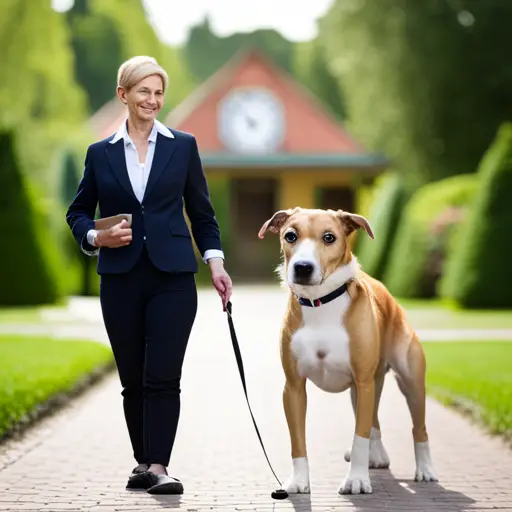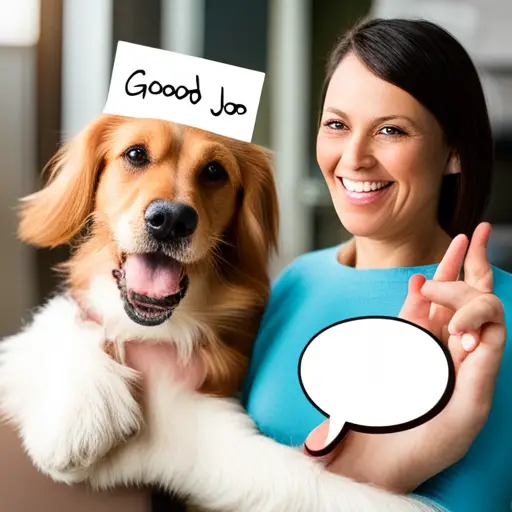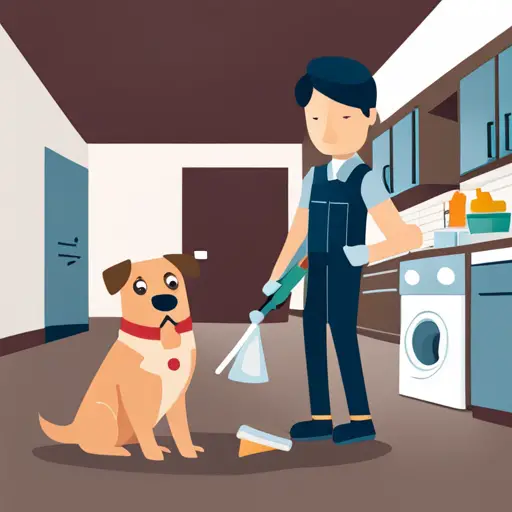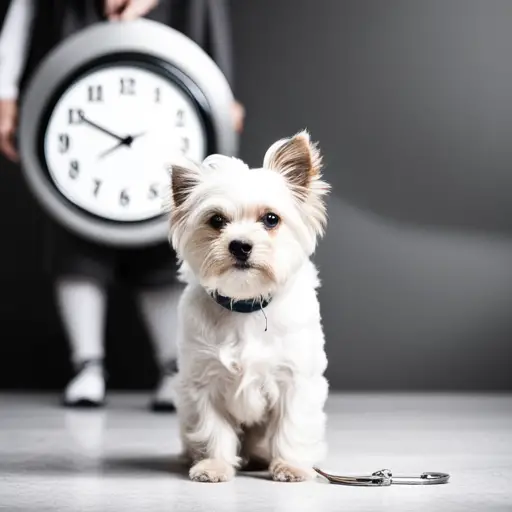Are you tired of constantly cleaning up after your furry friend? Do you dread taking them out for their daily potty breaks? Potty training your dog can be a challenging and frustrating process, but it doesn’t have to be.
With the right tips and tricks, you can successfully train your dog to do their business outside and save yourself from the constant mess.
Establishing a routine is key to potty training your dog. Dogs thrive on structure and predictability, so creating a consistent schedule for when they eat, play, and go outside can help them understand when it’s time to go potty.
Additionally, using positive reinforcement like treats and praise when they do their business outside can encourage good behavior and make the process more enjoyable for both you and your furry friend.
With a little patience and consistency, you can say goodbye to accidents inside and hello to a well-trained pup.
Key Takeaways
– Establish a consistent routine for meals, playtime, and potty breaks to provide structure and predictability for your dog.
– Use positive reinforcement, such as treats and praise, to encourage good behavior and celebrate small victories.
– Supervise your dog closely and use confinement, such as crate training, when unsupervised to prevent accidents and reinforce good behavior.
– Use enzymatic cleaners to clean up accidents and avoid products containing ammonia. Remember that potty training requires patience and consistency, and setbacks may occur. Joining a community of dog owners for support can also be helpful.
Establish a Routine

Establishing a routine is key to potty training your furry friend, so make sure to stick to a consistent schedule! This means establishing boundaries and setting aside specific times for meals, water, bathroom breaks, and playtime.
Consistency in schedule will help your dog understand when it’s time to go outside and do their business, reducing the likelihood of accidents inside the house. It’s important to establish these boundaries early on in the potty training process and stick to them throughout.
This will help your dog understand what is expected of them and make it easier for them to learn. Consistency is key, so make sure to stick to the same routine every day. By doing so, you’ll be one step closer to success in potty training your furry friend.
Using positive reinforcement is another crucial aspect of potty training, so let’s dive into that next.
Use Positive Reinforcement

You can encourage your furry friend with treats and praise to reinforce their good behavior during the process of teaching them proper elimination etiquette. These training techniques are based on behavioral conditioning, which means that positive reinforcement will help your dog understand what they should be doing.
Here are a few ways to use positive reinforcement during potty training:
– Offer your dog a small treat immediately after they eliminate in the designated area. This will help them associate their good behavior with a reward.
– Use a happy, excited tone of voice when praising your dog for going potty in the right place. Dogs respond well to positive energy and will be more likely to repeat the behavior.
– Consider using a clicker to signal to your dog that they have done something right. Clickers are a popular tool for positive reinforcement training because they provide a consistent sound that your dog can learn to associate with good behavior.
By using these positive reinforcement techniques, you can help your dog learn the proper elimination etiquette and make potty training a positive experience.
As you continue to encourage your dog with treats and praise, remember to also supervise them closely to prevent accidents and reinforce good behavior.
Supervise Your Dog

To successfully potty train your dog, it’s important to supervise them closely. Keep them in a confined area, such as a crate or playpen, when you can’t watch them.
Watch for signs that they need to go, such as sniffing or circling, and take them outside immediately. Use a leash to maintain control and guide them to the designated potty area.
Keep Your Dog in a Confined Area
By containing your furry friend in a designated space, such as a playpen or crate, you can better monitor their behavior and prevent any accidents from occurring during the potty training process. Playtime restrictions can also be helpful in ensuring that your pup is not running around the house unsupervised and potentially leaving a mess.
Crate training is another effective method as dogs instinctively avoid soiling their sleeping area, making it a great tool for potty training. It’s important to make sure that the crate is appropriately sized for your dog and that they have enough space to stand up, turn around, and lie down comfortably.
Keeping your dog in a confined area also helps you establish a routine for potty breaks. Take your pup out to their designated potty area after meals, playtime, and naps. This will help them associate going outside with doing their business, and they will learn to hold it until they are taken outside.
Additionally, by being in close proximity to your furry friend, you can watch for signs of needing to go, such as sniffing around or circling, and take them outside before they have an accident. With consistent confinement and routine potty breaks, your dog will be on their way to successful potty training.
Watch for Signs of Needing to Go
When your furry companion starts pacing back and forth, it may be a signal that they need to relieve themselves soon. Other bathroom cues to watch out for include sniffing around a certain area, whining, or scratching at the door. Paying close attention to these signs can help you anticipate when your dog needs to go outside, making potty training a more successful and efficient process.
Once you notice your dog exhibiting these signs, immediately take them to their designated potty area outside. If they successfully relieve themselves, be sure to reward them with a treat or praise to reinforce the behavior. Consistency in watching for these signs and rewarding your dog for successful bathroom breaks is key to a successful potty training experience.
Now, let’s move on to the next section about using a leash for control.
Use a Leash for Control
Using a leash is like holding your dog’s hand as you explore the outside world together, providing a sense of control and safety for both you and your furry friend. Leash training is an essential part of potty training your dog, as it allows you to guide them to the appropriate outdoor spot and prevent them from wandering off to do their business in inappropriate places. It helps establish outdoor etiquette, making sure your dog is always under control and doesn’t disturb other people or animals.
When you start leash training, make sure you use a sturdy leash and harness that fits your dog comfortably. Train your pup to get used to the leash by attaching it to their collar and letting them drag it around the house. Then, gradually move to outdoor training, where you can guide them to the appropriate potty area. Remember to reward your pup for good behavior, and stay consistent with your training routine. With patience and practice, your dog will soon be a pro at leash training and outdoor etiquette.
Now that you have mastered leash training, it’s important to know how to clean up accidents properly. Remember, accidents happen, and it’s important to clean them up thoroughly to prevent any lingering smells that may encourage your pup to go in the same spot again.
Clean Up Accidents Properly

Properly cleaning up accidents is essential in potty training dogs. As a responsible pet owner, you need to ensure that you remove all traces of the accident to prevent repeat incidents.
It’s not just about removing the visible mess, but also about odor elimination. Dogs have a keen sense of smell, and if they detect even a faint scent of their urine or feces, they will be more likely to go in the same spot again.
To properly clean up accidents, you need to use enzymatic cleaners that break down the odor-causing molecules. Avoid using any products that contain ammonia as it mimics the scent of urine.
If your dog has had an accident on the carpet, consider using carpet protection or training pads to prevent the mess from seeping through.
Remember, accidents will happen, so be patient and consistent in your training methods.
Be Patient and Consistent

When it comes to potty training your furry friend, it’s important to remember that it takes time to fully grasp the concept. So, be patient with your pup and don’t get discouraged if accidents happen.
Sticking to a consistent routine will also help reinforce good potty habits. And remember to celebrate the small victories along the way, as they will eventually lead to success in the end.
Understand the Process Takes Time
It’s important to understand that potty training your dog takes time and patience, but the end result is worth the effort. Don’t get discouraged if your pup has accidents or setbacks along the way. Remember, consistency is key in training your furry friend.
To help you better understand the process, imagine a 2 column and 4 row table. In the left column, write down the things you need to do to train your dog, such as taking them outside every hour, rewarding them for going potty outside, and restricting their access to certain areas of the house. In the right column, write down the things your dog needs to learn, such as understanding that going potty is only allowed outside and learning to give you a signal when they need to go. As you progress through the training process, you can mark off each item on the list as your dog masters it.
Remember, potty training can be a frustrating process, but it’s important to stick to your routine and remain consistent. The next section will provide tips on how to establish a routine that works for you and your pup.
Stick to Your Routine
Just like a plant needs consistent watering and sunlight to grow, your furry friend also needs a consistent routine to thrive in their potty habits. Establishing consistency is key when it comes to potty training your dog. Dogs thrive on routine, and they learn best when they know what to expect.
Consequently, it’s important to establish a routine around meal times, walks, and potty breaks. For example, if you usually feed your dog at 6:00 am and 6:00 pm, try to take them out for a potty break 30 minutes after their meal. This will help them learn to associate meal times with potty breaks.
Timing is also another crucial component of a successful potty training routine. It’s important to be consistent with the timing of your dog’s potty breaks. Take them out first thing in the morning, after meals, before bedtime, and at regular intervals throughout the day.
Remember, dogs have small bladders, and they can’t hold it in for long periods. Consistency with timing ensures that your dog knows when it’s time to go potty, and they won’t have to hold it in for a long time.
Stick to your routine, and celebrate each small victory as your furry friend learns to thrive in their potty habits.
Celebrate Small Victories
Now that you have established a consistent routine for your furry friend, it’s time to celebrate the small victories! Potty training can be a challenging process for both you and your pup, but it’s essential to recognize and reward progress along the way. Celebrating small victories not only encourages your dog to continue learning but also motivates you to keep going.
One way to celebrate small victories is by creating a support system. Share your successes with friends and family, or even join a community of dog owners who are going through the same process. Having a support system can provide encouragement and accountability, making the journey less daunting. Additionally, it’s important to remember that every dog is different, and progress may vary. By celebrating small victories, you can focus on your dog’s unique progress and achievements.
| Emotion | Example |
|---|---|
| Frustration | You may feel frustrated when your dog has accidents, but remember that progress takes time. Celebrate when your dog successfully goes outside or uses the designated potty area. |
| Pride | When your dog meets a potty training milestone, such as going a full day without an accident, celebrate their achievement with treats and extra playtime. |
| Support | Join a community of dog owners who are going through the potty training process. Share your successes and struggles, and provide support for others in the same boat. |
| Encouragement | Remember to encourage your dog throughout the process. Celebrate every step, no matter how small, and keep pushing forward. |
Remember, potty training is a journey, not a destination. By celebrating small victories and creating a support system, you can make the process more enjoyable and successful for both you and your furry friend. Keep up the good work!
Conclusion
Well done, you’ve made it to the end of our potty training guide! By implementing the tips and tricks we’ve shared, you’re well on your way to success.
Remember to establish a routine and use positive reinforcement to encourage good behavior. And don’t forget to supervise your dog and clean up accidents properly to avoid any setbacks.
But most importantly, be patient and consistent. Potty training takes time and every dog is different. Don’t get discouraged if it takes longer than you expected. Just keep at it and your furry friend will eventually get the hang of it. Rome wasn’t built in a day, after all!
In conclusion, potty training your dog may seem like a daunting task, but with the right mindset and approach, it can be a breeze. So, keep calm, stay positive, and soon enough you’ll be able to proudly say that your dog is fully potty trained.
You’re officially on your way to becoming a dog potty training guru!
